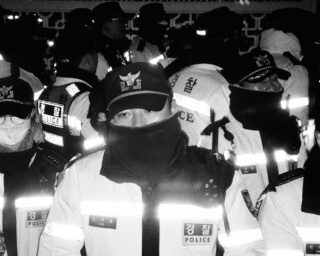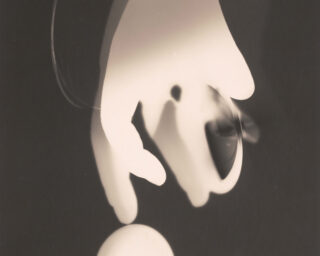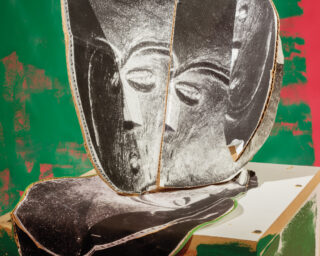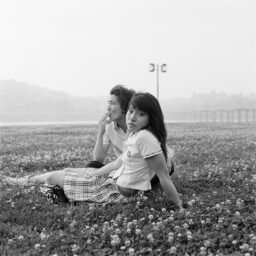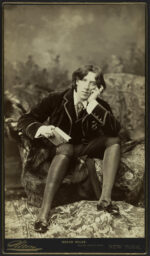Hiroji Kubota Photographer
Hiroji Kubota Photographer is the first comprehensive survey of Magnum photographer Hiroji Kubota, who has spent his life traveling extensively and documenting the world around him. The book will also be the subject of an exhibition at Aperture Gallery, opening November 18 at 7 p.m. followed by a book signing there on November 21 at 3 p.m. From his coverage of the Black Panther Party in the mid-1960s, to his incomparable access to North Korea, Kubota has prolifically captured the histories of diverse cultures, traveling to China, Burma, the U.S., North and South Korea, and his home country, Japan. Here, in an excerpt from the book, Aperture Foundation’s executive director Chris Boot speaks with Kubota about his beginnings as a photographer.
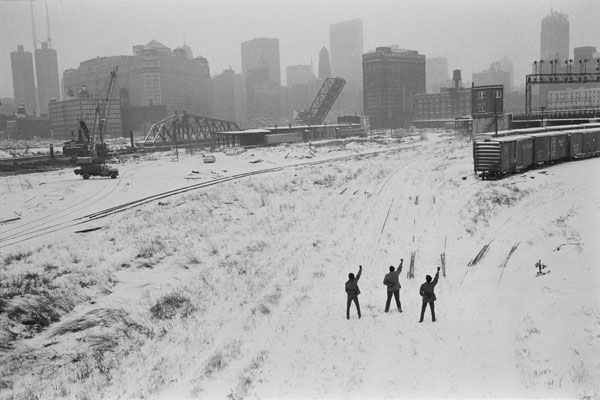
Hiroji Kubota, Black Panthers, Chicago, 1969 © Hiroji Kubota/Magnum Photos
Chris Boot: So, there was a moment then, when you decided this is the life you want?
Hiroji Kubota: When I’d spent time with these guys and studied The Decisive Moment, yes, that’s what I decided. At the time, it was extremely difficult for someone Japanese to leave Japan but I decided: If I am going to be a photographer, then I have to go New York! I needed a guarantor and I asked Elliott Erwitt. He didn’t have to do it, he had to give a lot of personal details to the authorities, I don’t know why he did it.
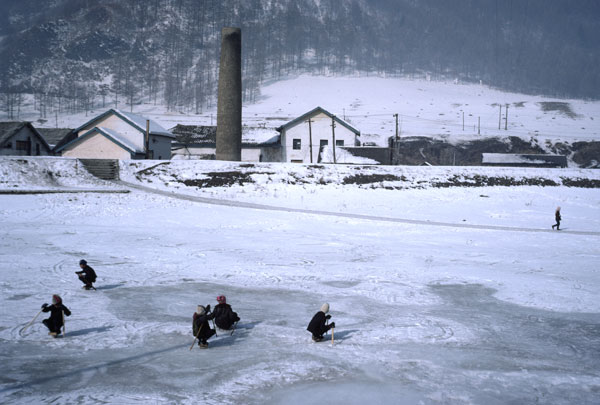
View of a village located somewhere between Hyesan City and Mount Paektu, North Korea, 1982
CB: Because he’s a generous man and he helps people.
HK: Yes, and he recognized some quality in me, I guess. I’m lucky I went to him. Even with his help, it took time to get permission to leave Japan. Even to take five hundred dollars out of Japan. I had to go ten times to the Bank of Japan’s headquarters. You know, those bureaucrats, they can be nasty. They’d say, “Oh, you made a mistake. Come back.” When I went back: “Now we need this.” They tried to stop me. At that time only diplomats, some Fulbright scholars, and a very few business people who were earning hard currency were allowed to go abroad.

Shanghai, 1979
CB: Did your father support this plan?
HK: Yes. He didn’t like it, but he trusted me. I was very determined and he let me do what I wanted to do. He was very broad and open-minded like that. Which was quite exceptional at the time—going abroad at that time was almost unimaginable, such a crazy idea. On my way to New York, I got a job from Bungeishunjū magazine. There was one adventurous Japanese guy, Kenichi Horie, who sailed across the Pacific, alone, in a small yacht. It was a big, big story for the Japanese. So the magazine, they knew I was going to America, so they asked me to visit this guy’s parents in Osaka, first. And then meet him in San Francisco when he arrived, to finish the story. Then I visited middle America, staying with a former American GI in Pittsburg, Kansas. Elliott came to meet me at the TWA terminal when I arrived in New York.
Apart from the yachtsman story, for the first year in the USA, I didn’t take pictures. Because I wanted to learn. I learned about photography, not technically, but by visiting Magnum’s New York office, on Fifth Avenue and 47th Street. Wayne Miller was the president and he invited me to spend time there. “Hiroji, you do whatever you want to do.” I did two things. Religiously, I went through all the contact sheets of Henri Cartier-Bresson, absolutely carefully. And it was the time that Bruce Davidson did his East 100th Street work, and I studied his contact sheets too, very carefully, to understand what made good pictures. By studying Magnum photographers’ contact sheets, I learned that photographers do better work without a commission than with. Which is obvious really: You do better what you are compelled to do than what you are asked to do. I learned it is better to avoid assignments, and concentrate on what I feel compelled to do.
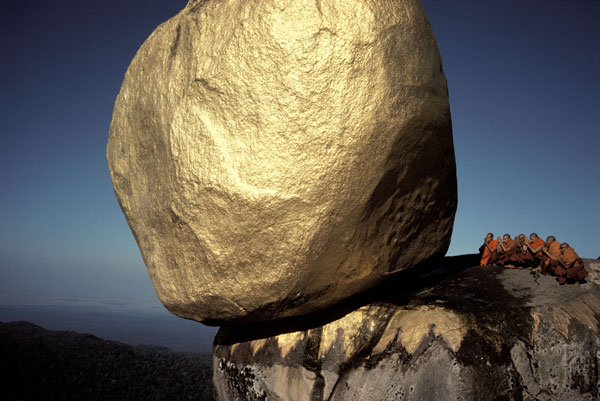
Kyaiktiyo, Burma, 1978
CB: You became very close to Cornell Capa. Did you meet him right away?
HK: I got in touch right away when I arrived in New York. He met with me, and gave me a glass of Spanish wine. It was the first glass of wine I ever drank. He and his wife Edie were very nice, and he gave me some assisting job. But how we struck up a relationship was because I could cook Japanese food. My mother taught me. And I offered to cook for him. He had many important people coming to visit him, and he would say “Hiroji, cook something interesting!” So, you know, I became his cook!
The other person I came to know, in 1963 or so, another really important relationship in my life, was André Kertész. I met him in the street at first. Then he used to hang around with the Magnum guys, and I came to know him. He became such a good friend. Though I don’t do the kind of photography he did—I don’t have that level of sensitivity—still, I learned a lot from him. I was the person to find him dead at his Fifth Avenue apartment in August 1985.

World’s Financial District, New York, 1989
CB: Describe your life in New York.
HK: Elliott’s father was Buddhist monk, you know, and he got me a room at first in the Buddhist temple. But it was a horrible place, absolutely depressing, with no privacy. So I moved out as soon as I could find a cheap one-room apartment. The rent was sixty dollars a month. And to learn, I would enroll in school. I wasn’t working toward a degree or anything, but I wanted to study, and to be among bright American students. I also stayed for one semester in Columbia’s graduate school boys’ dormitory while taking courses on the United Nations. I became good friends with many bright students, and they gave me much intellectual stimulation. Somehow I managed to pay for that.
CB: Are you earning money now, or are you still living on the five hundred dollars you came with?
HK: Well, the five hundred dollars didn’t last very long. I made money here and there. I got assisting jobs. Burt Glinn gave me twenty-five dollars a day to drive for him. Though I wasn’t cooking for Cornell for money, sometimes he would give me fifty dollars. And Magnum as a whole took care of me. The bureau chief at the time was the wonderful Lee Jones. She was so helpful to me—I don’t know why.

Visitors to the holiest temple, Jokhang, on Tibetan New Year’s Day, Lhasa, Tibet, 1981
CB: When did you start making pictures seriously?
HK: Someone at Newsweek said, “Hiroji, go to Atlanta to see Dr. Martin Luther King.” And I admit, I didn’t even know his name at that time. But I ended up going to Washington, D.C., for the March on Washington on August 28, 1963, where I heard Dr. King give his “I have a dream” speech. That was where I started to photograph America.

Sanja festival participants in the Asakusa district, Tokyo, 1967
CB: Was this a job from Newsweek?
HK: No. They just said, “You should go. Go, go, go!” And, they were right! Then from there I traveled by Greyhound bus and went to the Deep South, to Alabama and Mississippi. People there had never seen an Asian photographer, I was a novelty, and that helped me to move around quite easily and meet people. Black radicals welcomed me, and so did the FBI in Montgomery. At the same time, the Vietnam War was a serious matter. So I photographed demonstrations and draft card burning, those kinds of things.
CB: Were you selling your pictures to Newsweek, Life, or other magazines?
HK: No, I didn’t know those mechanics. My first job wasn’t until 1965. I applied for a job that I saw advertised for a new, well-funded research institute, called the Center for Urban Education in Greater New York, which studied learning among children with disabilities. They were looking for a photographer to document their work. Lee Jones helped me put the application together and acted as my proposer. I got the job. It was really my first job, and I was paid twenty thousand dollars, which was a lot of money for me. My work was well received, and then they immediately gave me another major job. It was my breakthrough, I suppose. At the same time, Magnum gave me accreditation, a press card, and a credit card.
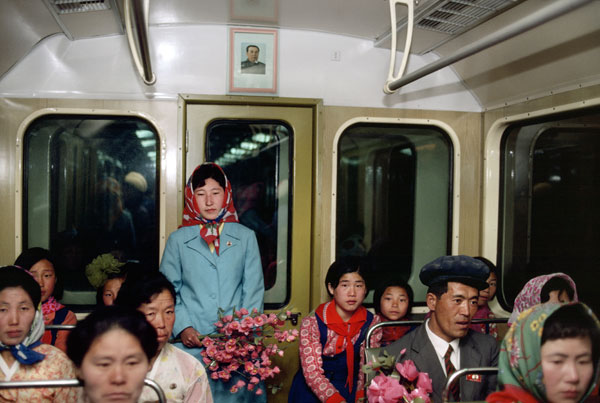
Pyongyang subway train, North Korea, 1982
CB: Were there other young photographers hanging out at Magnum at the same time?
HK: There were three others in New York in a similar situation. Gordon Parks, Jr., the son of Gordon Parks. The South African, Ernest Cole. And Danny Lyon. Danny was the one other photographer who ended up with a long relationship with Magnum.

Old kimonos made of tsumugi or pongee silk in Shiozawa are returned there every fifty years or so to bring back the original colors. To get the maximum effect, the unassembled pieces are dried over snow under blue sky, Shiozawa, Niigata, Japan, 2003
CB: Cornell Capa and Lee Jones were the two dominant figures of the organization at the time?
HK: Lee Jones, yes, but by then Cornell was much more preoccupied with creating the International Center of Photography. He’d already started working with the Riverside Museum, which was the basis for ICP, and then he bought, out of his pocket, the landmark former Audubon house on Fifth Avenue and 94th Street, where he set up the ICP. For some reason I became the one person Cornell would listen to, so I was very close to everything going on. His lieutenants and even his wife would say to me, “Hiroji, please tell Cornell, don’t do this!” or “Do that!” Then one day he asked me to join the ICP staff. I said no. No matter what, I wanted to stay a photographer. I’m glad I did.
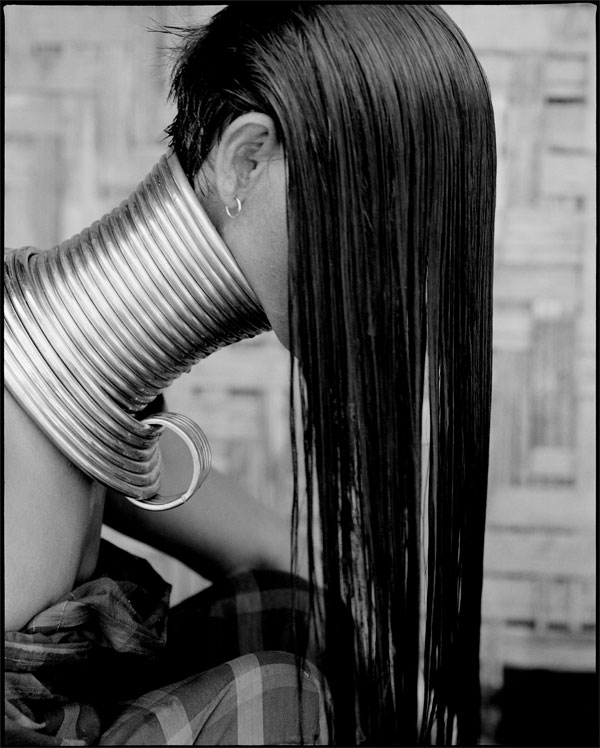
Mae Hong Son Province, near Burma, Thailand, 1997
CB: Did you see yourself at the time as a “concerned photographer”?
HK: I doubt it, but I want to give dignity to the people I photograph. I mainly used a 35 mm lens when I was working in black and white, in the early stages. I would photograph people, primarily, but the width of this lens means you also capture the social landscape around them, so it’s almost as if you’re telling this guy’s life, or fate. I think everybody has a great drama to talk about. Everybody. Even if people aren’t aware of it, or have no means to express it. But everyone reveals it, if only for a split second, in a facial expression. That says something about the kind of life they have gone through. I like to be so close to the person I am photographing that if he doesn’t like me, he can say so, or kick me. I like that distance—that emotional distance, physical distance. I am never unkind to my subjects. I don’t like brutal pictures.














